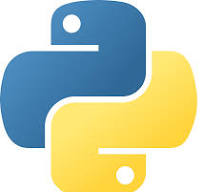Inner Workings of Python: Understanding the Python Engine and Bytecode Conversion
 Aryan Vats
Aryan Vats
Hey everyone, welcome back to my blog! Today, we're going to delve into the inner workings of Python. Whether you're an experienced developer or just starting out, understanding how Python operates under the hood can provide you with valuable insights into optimizing your code and troubleshooting errors.
Python Engine: The Powerhouse Behind the Scenes
Have you ever wondered how your Python code translates into actions on your screen? It's all thanks to the Python engine. When we write Python code, it's not directly executed by the computer. Instead, it's interpreted and executed by the Python engine. The most widely used Python engine is CPython, written in the C language. CPython reads our Python code, converts it into instructions that the computer can understand, and then executes those instructions.
Bytecode Conversion: From Human-Readable to Machine-Executable
But how does the Python engine understand our Python code? It all starts with bytecode conversion. Python doesn't execute our code directly; instead, it first translates our human-readable code into something called bytecode. Bytecode is a low-level representation of our Python code that the Python interpreter can understand and execute efficiently. This conversion happens automatically behind the scenes when we run our Python scripts.
The Mystery of the pycache Folder Unveiled
If you've ever noticed a mysterious folder named pycache appearing in your project directory, you're not alone. This folder is where Python caches the bytecode for imported modules. It helps speed up the execution of our code by avoiding the need to recompile the same modules every time we run our program. So, the next time you see that folder, know that it's just Python optimizing things behind the scenes.
Exploring Python Flavors: Beyond CPython
While CPython is the most commonly used implementation, there are other flavors of Python out there. These include Jython, IronPython, and PyPy, each with its own unique features and advantages. For example, Jython allows you to run Python code on the Java Virtual Machine (JVM), while IronPython is designed to integrate seamlessly with the .NET framework. Choosing the right flavor of Python depends on your specific project requirements and integration needs.
Conclusion: Empowering Developers with Python's Inner Workings
In summary, understanding the basics of the Python engine, bytecode conversion, and different Python implementations can empower you to write more efficient and effective code. Python's inner workings might seem complex at first, but with this knowledge, you'll be better equipped to navigate the world of Python development. So, the next time you fire up your Python interpreter, remember the magic happening behind the scenes! Thanks for reading, and until next time, happy coding!
Subscribe to my newsletter
Read articles from Aryan Vats directly inside your inbox. Subscribe to the newsletter, and don't miss out.
Written by
